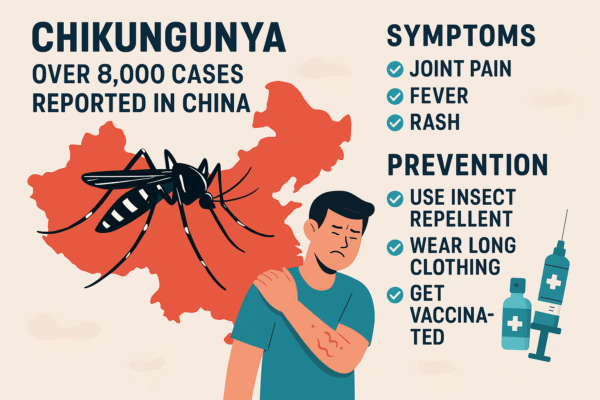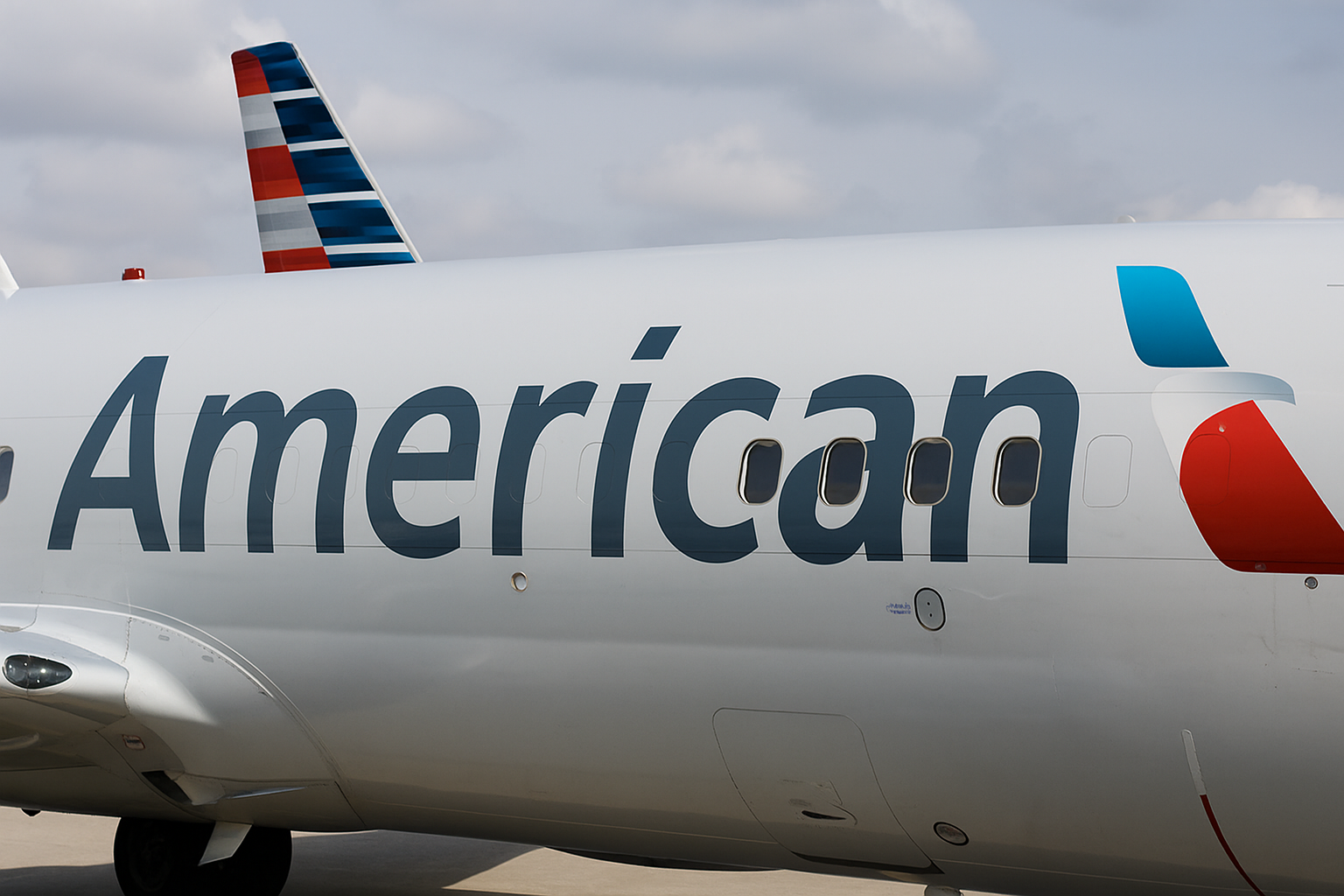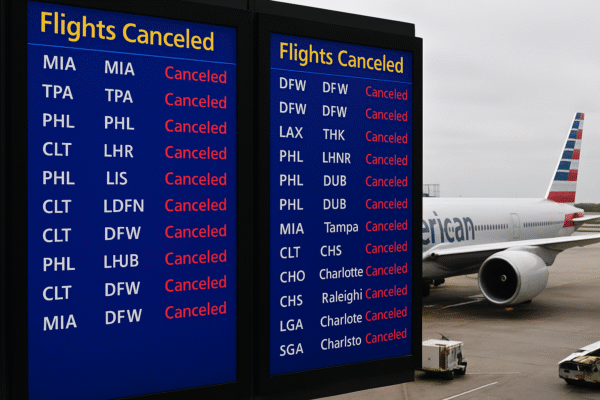On August 10, 2025, thousands of passengers across the United States, United Kingdom, Japan, Portugal, and Ireland faced unexpected travel chaos as American Airlines canceled more than 20 flights and delayed 78 others.
The disruptions affected both long-haul international routes and short-haul domestic connections, with major hubs including Miami International (MIA), Tampa International (TPA), Philadelphia International (PHL), Dallas–Fort Worth (DFW), and Charlotte Douglas International (CLT) bearing the brunt of cancellations.
Internationally, London Heathrow (LHR), Tokyo Narita (NRT), Lisbon (LIS), and Dublin (DUB) were hit, impacting both tourism and business travel at the peak of the summer season.
While American Airlines has not yet issued an official explanation, operational disruptions often stem from a mix of crew scheduling issues, aircraft availability, severe weather systems, or air traffic control restrictions—all of which can ripple across an airline’s global network.
Airports & Routes Most Affected
Philadelphia International Airport was the hardest hit, with nine cancellations, including high-demand transatlantic services to London and Lisbon.
Other major affected long-haul routes included:
- Dallas–Fort Worth (DFW) ↔ Tokyo Narita (NRT)
- Los Angeles (LAX) ↔ London Heathrow (LHR)
- Philadelphia (PHL) ↔ London Heathrow (LHR) – Multiple cancellations
- Philadelphia (PHL) ↔ Lisbon (LIS)
- Dublin (DUB) ↔ Dallas–Fort Worth (DFW)
Domestic cancellations impacted regional connectivity, with key routes such as:
- Miami ↔ Tampa
- Philadelphia ↔ Burlington & Austin
- Charlotte ↔ Raleigh–Durham, Charleston, LaGuardia, and Southwest Florida
- Dallas–Fort Worth ↔ John Wayne (Orange County)
These cancellations created a chain reaction, with missed onward connections forcing passengers to rebook or stay overnight at hub airports.
Passenger Experience – Long Waits & Missed Holidays
Travelers across continents reported long lines at rebooking counters, overcrowded terminals, and limited hotel availability near major airports.
Social media was flooded with photos of departure boards filled with “Canceled” notices. Families vacationing in Florida, business travelers bound for Europe, and tourists returning from Asia all faced disrupted plans.
Some passengers reported waiting over four hours to speak with customer service, while others had to arrange last-minute accommodation at their own expense.
Tourism & Economic Impact
The timing of the cancellations—mid-August, one of the busiest global travel periods—has amplified the disruption’s effect on the tourism sector in multiple countries.
According to the World Travel & Tourism Council (WTTC), every major disruption to air connectivity can result in millions in lost revenue for tourism-dependent cities.
- Portugal (Lisbon) is currently experiencing a record-breaking summer for inbound tourism, and lost flight capacity could lead to reduced hotel occupancy and fewer restaurant bookings.
- Ireland (Dublin), in the peak of its summer festival season, risks losing last-minute tourist arrivals.
- Japan (Tokyo), still experiencing a strong rebound in international visitors post-pandemic, could see reduced inbound spend from American tourists.
Advice for Stranded Travelers
Passenger rights and rebooking procedures vary by jurisdiction, but travel experts and government agencies recommend:
- Check Flight Status Before Heading to the Airport – Use the American Airlines mobile app or website for real-time updates.
- Keep Receipts – Hotels, meals, and transportation costs may be reimbursable, especially on flights covered under U.S. DOT or EU261 passenger rights regulations.
- Consider Alternative Routes – For domestic travelers, nearby airports such as Baltimore/Washington International (BWI) or Fort Lauderdale-Hollywood (FLL) may have availability.
- Know Your Rights in the EU & UK – For cancellations from London, Dublin, or Lisbon, passengers may be entitled to compensation of up to €600 under EU261.
- Purchase Travel Insurance for Future Trips – Policies that include “trip interruption” coverage can help offset unexpected costs.
Industry Outlook – Why Disruptions Happen
American Airlines is among the world’s largest carriers, operating an average of 6,700 daily flights to nearly 350 destinations. In such a complex network, even a small disruption at one hub can create a domino effect across continents.
Common causes for mass cancellations include:
- Aircraft availability issues due to maintenance or repositioning delays
- Crew shortages linked to scheduling conflicts or FAA rest regulations
- Weather disruptions—especially in summer storm season in the U.S.
- Air traffic control constraints at busy hubs like London Heathrow and Dallas–Fort Worth
As global aviation demand grows, airlines are under increasing pressure to balance operational resilience with profitability, leading to occasional large-scale service interruptions.
Final Word – Stay Prepared When Traveling During Peak Season
This latest wave of cancellations highlights the importance of proactive travel planning, especially during peak holiday months.
Passengers flying with American Airlines—or any global carrier—are encouraged to monitor flight updates closely, keep flexible itineraries, and know their passenger rights in case of disruption.
While the airline works to restore normal operations, the ripple effects may continue for the next 24–48 hours as planes and crews are repositioned. For now, travelers across the USA, UK, Japan, Portugal, and Ireland are urged to stay patient and informed.
For more travel news like this, keep reading Global Travel Wire
















